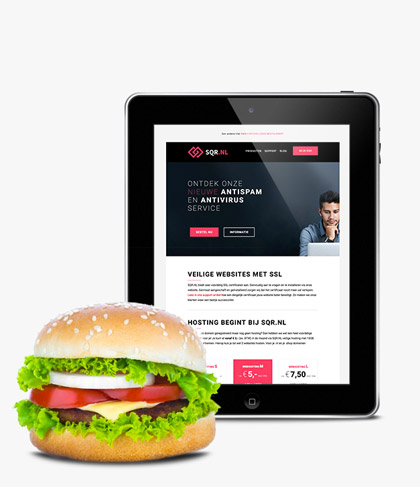Tips for building an email marketing list

An important aspect for any organization is getting attention for your products, services and promotions. This applies to a physical store, and certainly to an online store as well. A store in the street scene has a display window, signboard or other ways to attract the attention of passersby. On the Internet, that opportunity is limited to optimizing your SEO score and buying ads from search engines and other websites. Another possibility is the digital equivalent of the advertising flyer: e-mail marketing (usually via sending newsletters).
When sending your commercial message through the mail, you can freely try to write to people. Through the mailbox, there is an opt-out rule; people must actively indicate that they do not want your advertising (via a no-no sticker). But it is still relatively easy (though not cheap) to reach people who have never heard of you. For e-mail, this does not apply; it is opt-in. You need to build your own address file for distribution. And this according to the
European Privacy Legislation AVG/GDPR
. But, how do you do that?
Choose a mailing list service
You don’t send newsletters from your Gmail account. Besides the technical limitation of not being able to mail to hundreds of people at once, you miss out on many options that email services intended for this purpose do offer. Consider, for example, more options for shaping your mailing, testing, saving layouts and measuring performance.
One of the most widely used applications is
MailChimp
; a simple, easy-to-use tool for this. If you serve another modest list, it’s even free. However, there is much more software available, free and paid. Feel free to search for it yourself or
look here
for a selection.
If you want more with your email file and want to further integrate it with other processes within your company and automate communication flows and contact moments, there are also more comprehensive systems with even more functionality.
Intercom
is a good example of this.

Devise an incentive to enroll
Okay, so you’ve chosen a system; but after that, how do you populate your email lists? How are you going to get people interested enough to leave their e-mail address? You will have to excite them somehow. What reward are you offering them?
Of course, there are some obvious incentives: giving something away for free, a discount on the first order or some other financial incentive. There are also other benefits you can offer to subscribers, such as exclusive content. And of course, if you manage to come up with and provide something unique that is very specifically related or related to your product, you have something extra special on your hands.
Provide value beyond the commercial message. If the content of your email has more than just a sales goal, people are more likely to actually read it. A piece of exclusive content in the newsletter is a good example of creating additional value.

How do you make sure your list grows?
There are pretty strict anti-spam laws in effect in the Netherlands that you have to abide by. Simply emailing everyone you know is not allowed; neither is using an externally procured address file usually. You will really have to work on your own to convince people that they want to be kept informed (opt-in).
When clients sign up new they should indicate this, but any checkmarks in a sign-up form should be left to their own discretion. And once your customers get through this, you even have to be careful; strictly speaking, you may only alert them to similar services or products that they already use or have previously purchased.
In addition, of course, you also want to entice people who are not yet customers to sign up. What else can you do?
- Do you attend events? Give a reward when people leave their information.
- Provide a catchy call to action (CTA) on your website (for example, “subscribe to our newsletter and receive…”.
- Do the same through social media.
- Provide
an effective landing page
With a clear focus on the CTA. - Ask your members to forward your newsletter (tell a friend). Offer a reward if they bring in a new customer.
- Take advantage of
affiliate marketing
. Engage partners and reward them for bringing attention to your services or products.
These are just a few examples to get people interested and signed up for your newsletters and other mailings. Stay especially vigilant about not putting people on your list without permission and mention in every mailing how they can unsubscribe again. You run the risk of the OPTA fining you, which could theoretically be as much as €450,000. There is also the risk of reputation damage and ending up on blacklists of spam fighters. The latter may also affect your legitimate subscribers.
A few don’ts for your mailings themselves
There are lots of ways and tips to make your mailings good and effective. We will certainly pay attention to this in the future. For now, we’ll limit ourselves to naming a few pitfalls not to fall into, lest you quickly lose all your carefully amassed subscribers.
- Don’t send your mailings too often. You want people to enjoy hearing from you. If you mail too often, you run the risk that people will find it irritating and unsubscribe. Do not send them messages more often than a regularity you would feel comfortable with as well.
- Don’t make your mailings too sales-like. If you use too many standard sales terms in the subject and content, they read too much like spam, both to the reader and a spam filter. As much as possible, avoid terms like “free,” “discount” and the like and choose different wording to communicate your message.
- Don’t make your posts too long. Make sure your emails are short and to the point. Provide striking, catchy text and reinforce it with a design to match.
- Don’t forget to test beforehand. No matter how big or small your message may be, always send a test to yourself and your colleagues first. Check the design in different e-mail clients and with different e-mail providers. In addition, make sure that all links in your email are correct.
Conclusion
There are several ways to increase the reach of your newsletter. Look at your products and services and adjust it accordingly. Think carefully about where your potential customers are and what they might respond best to. Last but not least, experiment! If something doesn’t work, change tack and just try again.
